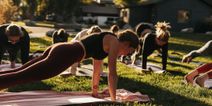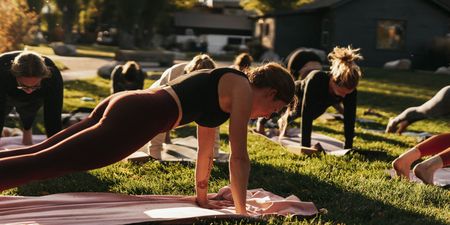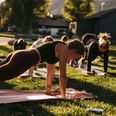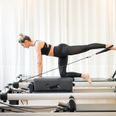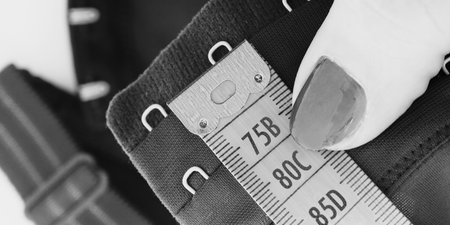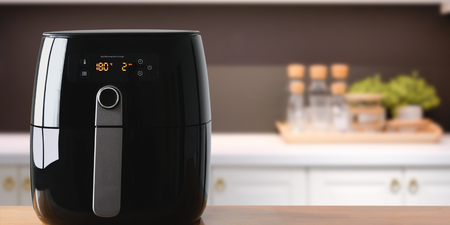You have visions of running like a world class athlete. The reality is you have as much grace as Bambi on ice. Not to mention after a few faithful sprints you’re gasping for breath and realising that the trek ahead is going to take some training.
Well, we’ve signed up with Glenisk who are supporting the Marie Keating Foundation team at this year’s Flora Women’s Mini Marathon. Glenisk have gathered a team of experts including Aveen Bannon of the Dublin Nutrition Centre and the fitness trainers over at Bodybyrne to provide us with nutrition and training tips for the lead up to the marathon. From stretches, nutrition and posture to mapping your route – we’ve got you covered.
Week 6 – You’re nearly there!
You’re now hitting week 6 and your fitness is almost there. For beginner runners you can see that 10km distance is in your grasp after all your work last week. For the intermediate to advanced guys, you’re building to your best time ever and this week is your chance to keep this up!

Beginners
Session 1 – For your first session this week, begin this session by gradually building to 5km at 70you’re your normal running pace. Once finished this, map out a 200m distance with the goal of running this at 80-90% of your max speed. This should be followed by a 1.5:1 ratio rest to work. For example, if it takes you 1 minute to do the 200m, take a full 90 seconds of recovery. Repeat this 6 times and finish up with a 5-10 minute slow jog to cool down followed by stretching as you do after every session.
Session 2 – Like previous weeks, the target here is again to run continuously but aim to complete the 10km distance at a comfortable run. Don’t be worried about timing – a 10km race is a great achievement for beginner runners so make sure you’re comfortable and able to maintain a steady pace. If you’re at a stage in your training where 10km is comfortable, try increase the distance by 1-2km but no further.
Session 3 – As with last week’s training, again aim to include a steady 4km recovery run to help keep the legs moving an extra day. This will also help enhance your recovery from the week’s training.
Session 4 – This session is aimed at increasing your body strength and core and will follow the same routine as last week. This will be a short 20 minute session, and will work in maintaining posture throughout the 10k run.
Perform 4 sets of each exercise with the desired reps below.
Circuit:
1) Body weight squats – 10 reps
2) Push-ups – 10 reps
3) Body weight lunges – 10 each leg
4) Plank – hold 30 seconds – 1 minute
5) Back extension – 10 reps
Intermediate
In week six of our intermediate training, we are looking at hitting the highest point of our training and will then working in tapering it off. This will have intermediate runners peaking come race day.
Session 1 – Start your training sessions this week by gradually building 5km at 75% of your normal running pace. Once finished this, map out a 200m distance and your goal here is to run the 200m as quick as you can, followed by a 1:1 ratio rest to work. For example if it takes you 1 minute to do the 200m, take a full 1 minute of recovery. Repeat this 10 times and finish up with a 5-10 minute slow jog to cool down. Be sure to stretch your muscles following each session.
Session 2 Long Run: Again, your second training session this week will act as your long run. Aim to run for a full 15km – ignore the speed but concentrate on making the increased distance. When it comes to race day, the 10km will seem a lot easier after adding in these long runs.
Session 3 – Again a steady 4km recovery run will help keep your legs moving an extra day and enhance recovery
Session 4 – Aim to run this 5km at the speed you hope to maintain on race day. Start with a 1km warm up, followed by the 5km of the race and gradually cool down with a final 1km. You should have managed 7km in total.
Session 5 – Following the strength and core instructions as outlined above, include this into your routine to work on maintaining good posture throughout the run.
Nutritional Tips This Week:
This week we look at the top tips to maintain a healthy balanced diet, keeping you in top condition for race day. We’re bringing you the breakdown on fat:
Good fats versus bad fats
Know the difference between what are good fats and what are bad fats. Good fats are non-animal fats, from fish and plant sources such as nuts, olives and avocados. These are high in Omega 3. Bad fats are vegetable and processed animal fats that are high in omega 6 which causes them to be pro-inflammatory causing damage to the body.
If eating animal products, ensure they are organic and of good quality. Eating more calories from fat sources can help achieve good body composition. This can help reduce inflammation, improve your metabolism, balance hormones and help control sugar cravings.
Eating more good fats
Eating good fats will not make you fat. Including the right fat in your diet will promote muscle fain while training.
Weight gain is caused by high levels of sugar in the diet. High sugar content in our diets causes a spike in our insulin levels making our bodies store more fat.
Avoid processed fats
Make sure to eat fats in their raw form. For example, when eating nuts choose the whole form options rather than ones with added salt/sugars etc or that have been cooked in vegetable oils. Good fats are ones that are unrefined. When using olive oil, don’t cook with a high heat which can cause oxidation. This is very harmful to our bodies.
Avoid vegetable oils, such as Canola, Corn and Sunflower oils
These oils are highly processed and have a poor omega-6 to omega-3 ratio. Ideally we want a ratio of 1 to 1. Having this ratio we are causing less inflammation in our bodies causing us less harm.
Make sure to eat Omega 3 fats
These types of fats are found in oil fish such as salmon and mackeral, and can help increase our metabolism. They also help lower inflammation, which decreases our risk of developing cancer and heart disease.
In summary do not be afraid of fats. Choose fats rich in omega 3, eating foods that are unprocessed, in their raw form. We’d recommend avocado, nuts, seeds, coconut oil and oily fish.
For your chance to whip up some healthy, balanced meals during your training, Glenisk have put together a recipe pack of quick but delicious recipes! Check them out here for some inspiration like delicious summer porridge, healthy salmon cakes and protein power smoothies.


